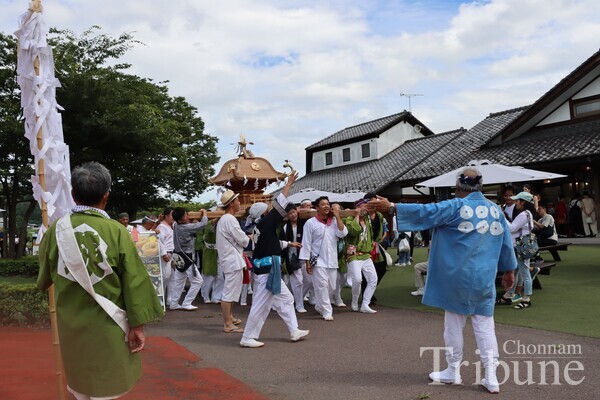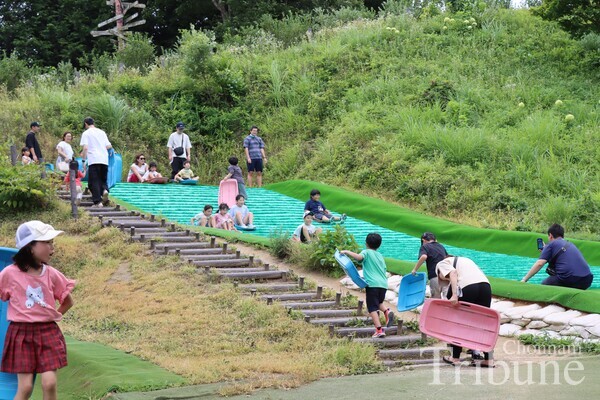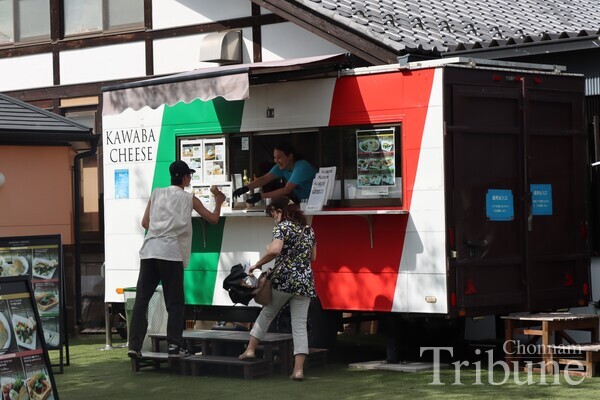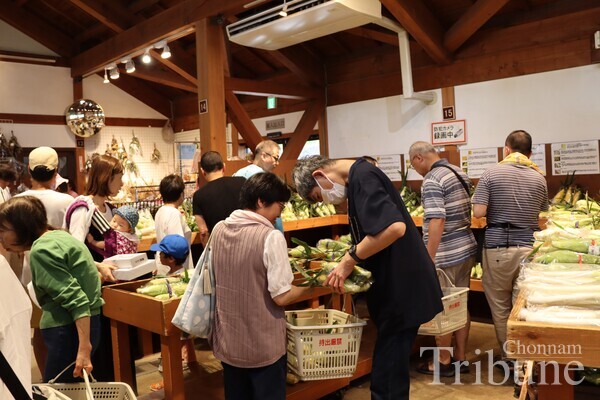Over the summer vacation, the Chonnam National University (CNU) Press and Broadcasting Center discovered Japan’s Kawaba Village, which has avoided becoming an “extinct locality.” This coverage has been provided as part of the short-term outbound “Oman-Gihaeng” program operated by the Office of International Affairs, aiming to cultivate a global mindset among university students. – Ed.

South Korea now faces the threat of “local extinction,” particularly in rural areas. According to the Korea Employment Information Service, 130 out of 228 local jurisdictions in the country were at risk of extinction as of June 2024. This collapse of local towns could trigger a chain reaction of economic, social, and cultural challenges, profoundly affecting the entire country. South Korea has suffered this threat for over a decade, while Japan encountered it earlier. So, there are many cases in Japan that can offer valuable insights for South Korea. One notable example is Kawaba Village in Gunma Prefecture, which was designated as an underpopulated area in 1971. Despite having been declared endangered over 50 years ago, Kawaba remains a healthy community, and had attracted over 2.7 million visitors as of 2023. This village is therefore a prime example of the potential for local revitalization through innovative strategies. The Chonnam Tribune visited Kawaba Village and explored how it has become a successful model for overcoming local extinction.
Unique Roadside Station Denen Plaza
Kawaba Village is renowned for its Denen Plaza, a unique roadside rest area. Unlike typical roadside stations limited to restrooms and small shops, the plaza spans approximately 60,000 square meters and features numerous appealing attractions, including a farmer’s market, a restaurant, a bakery, a café, and a children’s play zone. Kawaba’s Denen Plaza was ranked Japan’s No.1 roadside station, out of 1,450 in 2022. Kobayashi Yukie, a five-time visitor, said, “I always find myself coming back to Denen Plaza because I can spend the day participating in many activities. I especially enjoy buying desserts from Kawaba Premier while I’m here.”
Kawaba’s natural environment is also well-preserved. Despite the high number of visitors, which could potentially lead to litter problems, it is rare to find any trash on the streets. Toyama Kyotaro, the village’s leader, remarked that Kawaba Village has implemented policies focused on conserving and protecting the environment, as many people visit the village because of its beautiful scenery. Therefore, it offers a variety of activities for all ages that make the most of its rich natural environment. Everyone can relax in nature or engage in more active pursuits while fully enjoying the village’s unique charm.


Emphasizing Local Identity
Kawaba has cultivated its own brand identity with locally produced items. Kawaba Beer is made with local rice, called “Yuki Hotaka.” The village also offers a variety of products made with local ingredients, such as Kawaba Yogurt and Cheese. These offerings attract visitors eager to experience authentic flavors. In particular, the farmer’s market, which offers a range of local foods, is one of the most popular attractions in Denen Plaza. Selling directly from local producers, the market offers fresh local vegetables and other high quality specialty products at competitive prices that also boost local farmers’ incomes. This approach allows the village to preserve its unique identity while building a strong local brand, helping to revitalize the local economy.
Furthermore, there is an urban and rural interchange project called the “Second Hometown Creation Project,” initiated in 1979 by Setagaya, Tokyo comparable to Gangnam in Seoul. The project aims to foster a connection between urban and rural communities. As part of this project, every fifth-grade student from elementary schools in Setagaya visits Kawaba Village to engage in activities such as rice planting, blueberry picking, and woodcraft. Setagaya residents can enjoy these activities through special regional discounts. This continuous interaction provides economic benefits for both communities.


Leveraging Local Charm
The strategies of Kawaba Village are distinctive in that they integrate agriculture with tourism by emphasizing local advantages. It has revitalized itself into a thriving community by building a roadside station and carefully protecting its natural surroundings. It also has nurtured a vibrant local economy through the production and sale of regional products, allowing residents to enjoy increased job opportunities, higher incomes, and a better quality of life. Lastly, fostering strong connections with urban centers addressed urban overpopulation by promoting the appeal of rural areas.
Instead of relying on one-time tourism events or attracting foreign visitors, Kawaba Village has focused on a quality and service-oriented strategy targeting domestic customers, leading to sustainable development. This successful case implies that South Korea needs to develop sustainable strategies that reflect its unique strengths to address the issue of local extinction. Yun Ki-hwak, a representative of Kawaba Korea said, “It is important to have a creative way of being authentic and not following trends. A crisis is an opportunity, and the answer lies in the field.”
By Kim Young-ji, Editor

